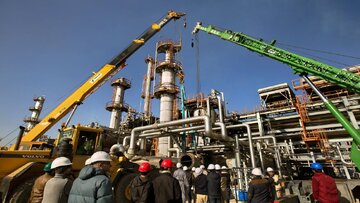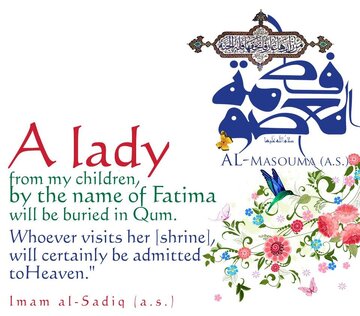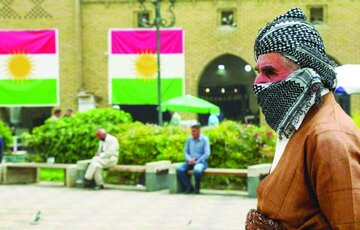AhlulBayt News Agency (ABNA): How do the Islamic Revolution and the Islamic Republic view ethnicity? This is an important question for many people and institutions that are curious about the Islamic Revolution, the Islamic Republic and its overall policies including the ruling system in Iran today. Many want to know what approach Iran has taken after the Revolution in its system of rule with regard to ethnic identities considering its particular slogans and features and they wonder what approach it has taken toward ethnic groups. Do the two Leaders of the Islamic Revolution of Iran - Imam Khomeini and Imam Khamenei - believe in the superiority of a particular ethnic group or race? And do they advance or have they advanced their goals by allowing this superior group to dominate over others? Or do they negate ethnicity based on a particular interpretation of Islam and attempt to eliminate it? In this article, we attempt to elaborate on these issues.
Today, after forty years from the time of the start of the Revolution and the time the country passed from being a secular monarchy to a religious republic, the truth-seeking audience in the world has become aware of the true propositions of this Revolution. It is obvious to everyone that Iran and Iranians fight against arrogance and strongly refuse to accept foreign domination. Examining the behavior of the Arrogant Powers and the world’s Domineering Powers shows that they have spared no attempt to try to make this nation surrender and give up its purpose and ideas. So how has Iran survived in its confrontation with the Arrogant Powers and been able to emphasize the slogans of its Revolution despite the fact that it did not belong to the well-known Left Bloc (of which there is no trace now), which was an effective movement against the West. Iran was even sanctioned and rejected by them (the Left Bloc) and repelled attacks that used some of their military equipment. An example of this is the case of the equipment that the Soviet Union gave to Saddam during the eight-year Imposed War.
The answer is not hard to find though some aspects of it still remain uncovered particularly with regard to Iran as a country that is not dependent on any power. In other words, all of the well-known countries in today’s world are either dependent on another power or they have an indistinct presence. It is obvious that the foundation of Iran’s strength cannot be based on any other power unless we draw on the Hollywood industry’s theme and say that aliens are helping the independent Iran. But what does Iran’s self-reliance mean? What does Iran really rely upon? Does it rely on its academic and technological strengths, on its oil resources, on its mines, on its economic foundation, on its cinema, media and propaganda tools, or on its missiles and military capabilities?
In all of these fields, other countries exist that have a considerably higher level of development in these fields but they are the captives of the Domineering Powers. And except in some marginal issues, they are unable to resist and stand up to the Arrogant Powers, which work against humanity. But with regard to Iran, the answer to this question lies in “the strength of the people.” A country that has no one to help it will naturally depend only on its own domestic potential for moving forward and taking steps. Iran is not afflicted by classic colonialism. It has advanced its goals during the process of the Revolution by adopting independence as its slogan and with the purpose of becoming independent from the world of the hegemonic powers. It has relied on the strengths of its own people, a people who have a particular local identity, language, ethnic and linguistic identity of their own.
A common expression is used for Iran that describes it as being a paradise for the people of different ethnic groups and divine religions. Although this seems like a poetic expression, that which gives a sense of pride, indicates a subtle point and is the key to understanding Iran’s strength lies in its great ethnic diversity. The word paradise evokes a land of flowers that are rooted in one soil with green stems, leaves, and unique blossoms and colors depending on their individual talents and kind. It is clear to the gardener that the greatness and beauty of this garden lies in its diversity.
A brief look at Iranian ancient history reveals that despite its ethnic diversity, Iran is not a land and culture of ethnic groups that have been pinned together or a union of ethnicities. Accordingly, any Iranian knows and introduces him primarily as Iranian irrespective of his identity and family background. It is only when he is asked about his ethnicity, that he mentions it. This has been true about Iran from times past, and whenever any separation or division has occurred, the fault lay with politicians and their colonial agreements rather than the people.
In addition to global arrogance, which has not been able to understand the Iranian identity and Iranian ethnic groups despite making a vain attempt in this regard, even Iranian political groups and rulers before the Islamic Republic sometimes failed to understand the Iranian ethnic identity. However, the Islamic Revolution recognized these ethnic talents and attempted to increase its area of influence by developing these talents.
The slogans and ambitions arising from the Islamic Revolution, the most important of which is the creation of a new Islamic civilization, provide evidence for the fact that Iran’s view of ethnicity is basically directed at achieving a transcendent goal. There is much evidence to show that the issue of ethnicity in Iran, particularly after the Islamic Revolution, has turned into a valuable, effective social structure, which is directed at the desirable pursuit and attainment of justice.
The security and peace in Iran today, despite the hostility of the US, the Zionist regime and the Wahhabis toward Iran along with their attempts to pit the different ethnic groups against each other and against the Iranian, revolutionary identity, shows that there is a cohesive unity between Iranians of all ethnic backgrounds. The Islamic Revolution has created such a motivation and outlook in the people that they have remained steadfast in their resistance and are making progress despite the many campaigns that are launched by the aforementioned disruptors.
The security in Iran, particularly in the border regions where the majority of their population and military power are Sunni, is a good proof of this claim. In the Imposed War against Iran, the first three provinces and the fifth out of the first five provinces with the largest number of martyrs were in eastern and central Iran although the war was fought in western Iran. These statistics shows that the Shi’a in Khorasan (eastern Iran) sacrificed their lives for the security and lives of the Kurdish Sunnis (in the west).
The ethnic identity of the authorities of the Islamic Republic is also an indication of the intertwined identity of Iranians and the equal treatment of ethnic groups. The current Leader of the Islamic Revolution is originally Turkish; his father is Turkish; the Secretary of the Supreme National Security Council of Iran is Arab; the Secretary of the Expediency and Discernment Council is a Bakhtiari Lor, and Kiumars Heydari, Commander of the Iranian Army’s ground forces, is Kurdish. In the same way, the political, military and cultural authorities are from different ethnic groups. More interestingly, Iranian people are not aware of the ethnicity of their authorities and even their friends, because it is not a concern for Iranians.
When the remains of Martyr Qasem Soleimani entered Iran, no one was concerned with what ethnic group he belonged to. The people of various provinces with different ethnic backgrounds requested that his holy remains be transferred to their city so that they could carry him on their hands, so that they could participate in his funeral procession and so that he would bless their city with his holy remains.
Another measure taken by the Islamic Republic was the endeavor to create scientific and cultural justice in different parts and among different groups within Iran with their particular ethnicities. A large number of universities, scientific centers, research centers and provincial channels that are in the language of that locality have been established across Iran. Currently, each part of Iran has turned into a scientific, cultural center of excellence in a particular field.
In addition to its internal security, the Islamic Revolution has established regional security by trusting its ethnic groups to stabilize its cultural and economic relations with Pakistan, Afghanistan, Turkey, Turkmenistan, Iraq, Azerbaijan, and other countries .
The Islamic Republic’s plan for a new civilization is based on this idea that it does not want to use the talents of all ethnic groups for the sake of Iran alone. It believes that western Asia can achieve a sustainable peace, progress and resistance drawing on such a view. That is why Qasem Soleimani, the Shi’a commander of IRGC’s Quds Force, said we should provide as much support to the Shi’a Hezbollah as we do to the Sunni resistance groups of Palestine. This originates from the plan that includes ethnic groups where the political and military leaders of Iran have set goals for a new civilization.
It seems that based on the Islamic viewpoint that considers taqwa[1] to be the criterion for human beings worth rather than race, color and language [Qu’ran, 49:13], the Islamic Republic has been able to find the key to integration and use of common human strengths. This is an understanding found in Islam and the Qur’an that views all ethnicities as being equal and recognizes their variety. More interestingly, the Qur’an also recognizes other divine religions and calls their followers to divine reward. [Qur’an, 2:62 and 5:69]
Accordingly, in addition to including the various ethnolinguistic groups after the Islamic Revolution, protecting the rights of religious minorities has not been forgotten about at all. According to Principle 64 of the Constitution, Zoroastrians, Jews, and the Ashouri, Keldani and Armenian Christians have their own representatives in Parliament.
Protecting this unity of ethnicities is also very important to the Iranian leaders. In a religious ruling, Imam Khamenei announced that all ethnic jokes, ridiculing, imitating and making fun of the accents of ethnic groups are haram (religiously forbidden). Perhaps the best closing words to express the view of the Islamic Republic on ethnic groups can be the following statement from Imam Khamenei.
“The Islamic Republic (of Iran) considers ethnic variety in our great, victorious country to be an opportunity. Different traditions, customs and a variety of talents is an opportunity for all parts of this nation to complement each other by way of appropriate interactions, peaceful coexistence and unity. This is an honor for our nation to have such a view with regard to the issue of ethnic variety. The reason behind this is that Islam is the source of inspiration for this system. And from an Islamic perspective, there is no difference between different races and languages even though the people may have different nationalities, let alone between different ethnic groups within a nation. This is the view of Islam, and the view of the Islamic Republic is the same.”
-------
1. The Quranic term taqwa does not have a single exact equivalent in English. However, it contains meanings such as “righteousness,” “dutifulness,” and “Godwariness
/129





